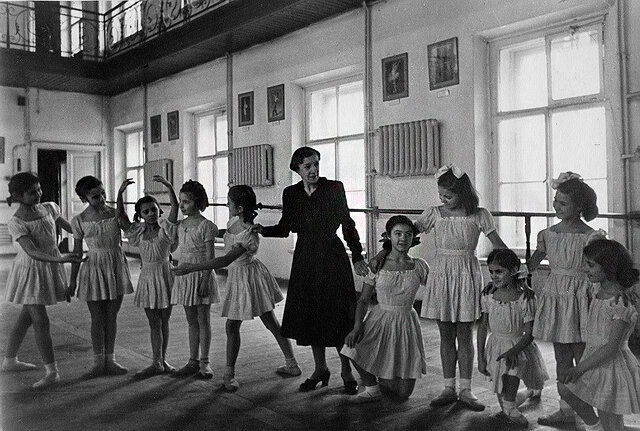
The Vaganova Method.
Agrippina Vaganova.
Agrippina Vaganova (1879-1951) was a student at the Imperial Ballet School in Saint Petersburg, graduating in 1897 to dance professionally with the school’s parent company, the Imperial Russian Ballet.
Following the Russian revolution of 1917, she returned to the school as a teacher in 1921 where she developed a scientifically proven teaching method that gained world-wide fame and produced many of the great dancers, including Anna Pavlova, Natalia Makarova, Rudolf Nureyev, Mikhail Baryshnikov, the legendary choreographer George Balanchine, and professional dancers in almost every company in the world.
The Vaganova Method
Her method became known worldwide as the Vaganova method. It is a scientifically proven system of teaching classical ballet that was developed over 30 years of teaching, involving the systematic study of all ballet movements by breaking them down into their separate elements. Vaganova notated her system in her 1946 book, Basic Principles of Russian Classical Dance.
Characterised by impeccable precision, ease of execution, emotion-evoking grace, and individual creativity, the Vaganova method fuses the romantic style of the French ballet, the dramatic soulfulness of the Russian character, and the athletic virtuosity of the Italian school.
Today, Vaganova’s method of ballet training is widely regarded as the best training system in the world. It is employed by many professional ballet companies and their associated schools worldwide.

The Vaganova Academy.
Established in 1738 during the reign of Empress Anna, the academy was known as the Imperial Ballet School until the Soviet era, when, after a brief hiatus, the school was re-established as the Leningrad State Choreographic Institute.
In 1957, the school was renamed in honour of the pedagogue Agrippina Vaganova, who cultivated the method of classical ballet training that has been taught there since the late 1920s. Many of the world's leading ballet schools have adopted elements of the Vaganova method into their own training.
The academy is the associate school of the Mariinsky Ballet, one of the world's leading ballet companies.
It all begins with an idea. Maybe you want to launch a business. Maybe you want to turn a hobby into something more. Or maybe you have a creative project to share with the world. Whatever it is, the way you tell your story online can make all the difference.
Our expertise.
Kate Reilly began her journey into in the Vaganova method at the John Cranko-School in Germany under pedagogue Ute Mitreuter-Russo, a graduate of St Petersburg’s Vaganova Academy. Frau Mitreuter-Russo’s teachers were all students of Vaganova herself, and included Vera Kostrowitzkaia, Feja Balabina, Naima Baltatschejewa and Nina Belikowa.
After graduation from the John Cranko-School, Kate danced professionally in Germany, refining her technique under the daily coaching of Russian ballet masters and company directors.
Returning to Australia after six years abroad, Kate sought out pedagogical training in the Russian method and relocated to Melbourne in order to study the Graduate Diploma in Classical Ballet Teaching at the Victorian College of the Arts under the tutelage of Robert Ray and Janne Blanche.
She subsequently founded the Melbourne School of Classical Dance, in order to give local children in Melbourne access to these specialised techniques. The school grew rapidly, from two sisters to 200 students, many of whom have gone on to further studies at pre-professional academies around the world.
In 2012, she travelled on a ballet study tour to Moscow and St Petersburg, and was awarded a certificate in ballet pedagogy from the Bolshoi Ballet Academy (short course).
Kate also completed teacher training with the Australian Conservatoire of Ballet and the International Character Dance Syllabus, each grounded in the Russian methodology. Throughout this time, she also continued her studies with Nina Osipyan (Classical Ballet) and Alida Segal (International Character Dance).
Vaganova-based examinations:
We specialise in two examination syllabi, each of which is grounded in the Russian teaching methodology:
Ballet Conservatoire (classical ballet exams).
International Character Dance Syllabus (character dance exams).
We can support your child to achieve their fullest potential in these exams, with a track record of excellent results.
Head over to our Ballet Exams page to read more.
